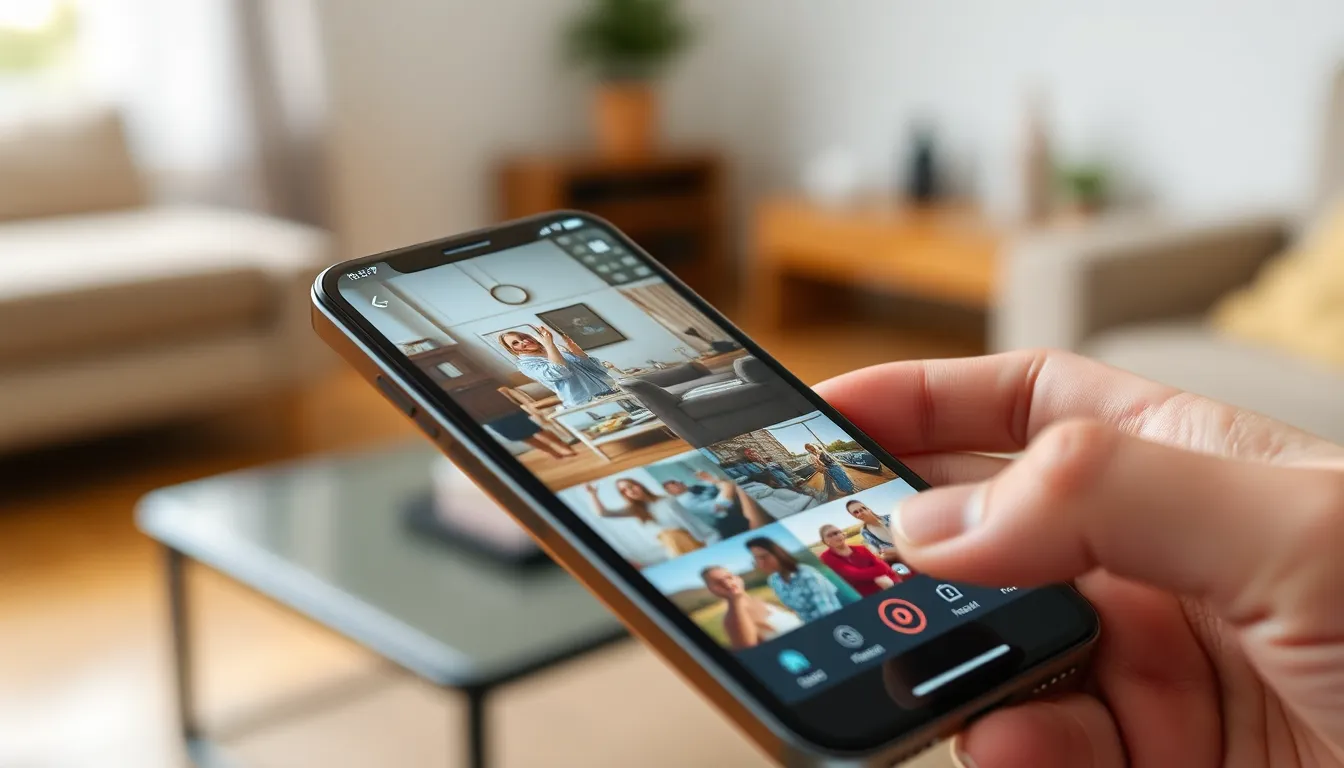Table of Contents
ToggleIn a world where every moment seems Instagram-worthy, it’s easy to find your iPhone overflowing with photos. But what happens when that digital clutter starts to feel like a game of Tetris gone wrong? Fear not, because deleting those unwanted pictures doesn’t have to mean saying goodbye to your precious iCloud memories.
Understanding iCloud and iPhone Storage
iCloud serves as Apple’s cloud storage solution, allowing users to store data online. This platform securely saves photos, documents, and backups, making them accessible across multiple devices.
What Is iCloud?
iCloud offers a safe space for users to keep their digital files. It includes features like iCloud Drive, which stores various file types, and iCloud Photos, dedicated to image storage. Users benefit from automatic backups of devices, ensuring data remains intact during upgrades or replacements. Additionally, it enables seamless sharing of files and photos with family and friends, enhancing collaboration and connectivity among users.
How Does iCloud Sync Work?
iCloud syncs data across devices in real time. When a user takes a photo on an iPhone, that image automatically uploads to iCloud. Users can access this photo from any device linked to their Apple ID. Deleting a photo from the iPhone can lead to its removal from iCloud unless certain settings are adjusted. This process is crucial for managing storage while retaining valuable data in the cloud. Importantly, iCloud sync settings allow selective syncing, helping users control what information stays on their devices.
The Need for Deleting Local Photos

Decluttering local photo storage provides a way for users to enhance their device performance while keeping important memories intact. Managing storage efficiently helps maintain speed and functionality on an iPhone.
Reasons for Deleting Photos from iPhone
Freeing up space on an iPhone occurs for several reasons. Users often find themselves running out of storage due to large photo files. Excessive photos can lead to slower performance and hinder new app downloads. Clearing unwanted pictures increases available memory for system updates and other multimedia. Additionally, organizing photos fosters easier access to important images, making everyday use more efficient.
iCloud Photos vs. Local Storage
iCloud Photos serves as a cloud-based storage solution that keeps copies of images off-device. This feature allows users to access photos across all connected Apple devices anytime. Local storage houses pictures directly on the iPhone, which can consume considerable space. Users benefit from iCloud’s ability to sync and store photos safely, bypassing potential data loss. Balancing the use of iCloud and local storage makes managing digital assets more effective.
Steps to Delete Pictures from iPhone Without Deleting from iCloud
To effectively manage photos on an iPhone, follow these steps to delete pictures without affecting your iCloud storage.
Enable Optimize Storage on iPhone
Enabling the Optimize Storage feature allows users to store only smaller versions of photos on the device. Large original files remain safely in iCloud. Access Settings, select Photos, and enable Optimize iPhone Storage. This setting automatically manages local storage needs, freeing up space by keeping the high-resolution versions online. Users can still view and access their photos without cluttering their devices.
Disable iCloud Photos Temporarily
Disabling iCloud Photos temporarily provides a way to manage local images without affecting the cloud library. Navigate to Settings and choose Photos, then toggle off iCloud Photos. When this feature is disabled, photos deleted from the iPhone remain stored in iCloud. Users can confidently delete unwanted images from the device, knowing that their memories safely exist in the cloud.
Deleting Photos from Your iPhone
Deleting photos from an iPhone is straightforward. Open the Photos app, select the images chosen for deletion, and tap the trash icon. Confirm the deletion when prompted. Deleted items will appear in the Recently Deleted album for 30 days, allowing users to recover any accidental deletions if needed. Emptying the Recently Deleted album will permanently remove these images, further clearing up storage space.
Tips for Managing Your Photo Library
Managing your photo library requires strategies to keep it organized and accessible. Users can effectively streamline their photo collection while maximizing iCloud’s benefits.
Organizing Photos on iPhone
To keep photos organized on an iPhone, creating albums enhances categorization. Users can group photos by events, people, or themes. That method simplifies navigation and retrieval. Utilizing tags helps to add searchable keywords, making specific images easier to find. The Favorites feature also allows for quick access to cherished pictures. Regularly reviewing and deleting duplicates or blurry images ensures clarity. Prioritizing organization contributes to a smoother user experience.
Using Third-Party Apps for Better Management
Many third-party apps assist in managing photo libraries efficiently. Popular options include Google Photos and Adobe Lightroom, which offer advanced features like automatic backups and robust editing tools. These apps often provide additional storage options beyond what’s available in iCloud. Users can take advantage of smart organization features, like facial recognition and location tagging. Exploring app settings unlocks tailored management options for unique needs. Regularly backing up photos to multiple platforms enhances security and accessibility.
Managing photos on an iPhone can be a daunting task but it doesn’t have to be. By utilizing iCloud and understanding how to adjust sync settings users can effectively delete unwanted images from their devices while keeping their memories safe in the cloud. This approach not only frees up valuable storage space but also enhances device performance.
With the right strategies in place such as optimizing storage and organizing photo libraries users can enjoy a clutter-free digital experience. Embracing third-party apps can further streamline photo management making it easier to access and edit cherished memories. Taking these steps allows users to maintain a balanced and efficient photo collection.





